Memoir Preview
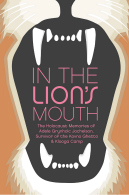
In the Lion’s Mouth: The Holocaust Memories of Adele Grynholc Jochelson, Survivor of the Kovno Ghetto and Klooga Camp
We could say that Adele and her sister went out of the lion’s den into the lion’s mouth.
Adele née Grynholc and her sister, Tola, lost their parents to illness just before the Germans occupied Vilna, Lithuania, in June 1941. Only teenagers, the sisters were invited by an uncle to come to the Kovno Ghetto where he would look after them. After various mishaps on their way to Kovno—for one, all their possessions were stolen—they arrived at the Kovno Ghetto. There for twelve hours a day, Adele was forced to labor for the SS, unloading bricks and heavy cement bags from freight trains and working for the Luftwaffe repairing and expanding the military airfield.
During the fall of 1943, Adele and Tola were deported from the ghetto via cattle cars to Klooga Labor Camp in Estonia where the conditions were brutal. Food was scarce and even water was rationed. Adele worked at various jobs in Klooga; the worst was in a factory making cement blocks that were needed as fortifications. No easy work!
Adele Jochelson’s memoir, In the Lion’s Mouth, describes the liquidation of the camp and how she and Tola survived—two of only eighty survivors. The sisters survived because of Adele’s courage and wisdom, qualities manifest even at her young age of nineteen. Readers will be inspired by her memoir, a testimony to resilience and grace.
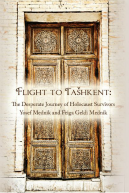
Flight to Tašhkent: The Desperate Journey of Holocaust Survivors Yosef Mednik and Feiga Geldi Mednik
Yosef Mednik was born in Mizoch; Feiga Geldi, in Shumsk. Both towns are in Poland, about twenty miles apart. Married in 1939 before WWII began, in 1941 the desperate couple fled east in advance of the EinsatzgruppenAktions (mobile killing squads). Their families refused to flee with them, thus dooming themselves to a tragic fate.
Yosef and Feiga journeyed east, settling temporarily in Zaporizhia, Ukraine. When the Germans caught up with them, they fled farther east with the Red Army, ending up in Tašhkent, in the Uzbek Soviet Socialist Republic (SSR). Their experiences of life on a kolkhoz, a collective farm, and, for Yosef, in the Polish/Soviet Army are profoundly moving.
Yosef and Feiga Mednik experienced the Holocaust in places readers rarely hear about. Most readers know about the ghettos and concentration camps but are not cognizant of the number of Jewish refugees who fled to the U.S.S.R. Yosef’s and Feiga’s experiences in Tašhkent on the kolkhoz and in the Polish/Soviet Army provide readers with a better understanding of where Jews fled to escape murder at the hands of the Nazis. This is a part of the Holocaust that has not been fully explored. We can be grateful to Gary Mednick’s determination to publish his parents’ memoir, Flight to Tašhkent, for enlightenment about Jews in the Soviet Union during the Holocaust.
2019. 172 pages. ISBN: 978-1-935232-90-2
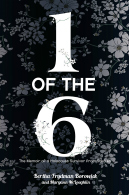
One of the Six: The Memoir of a Holocaust Survivor from Sokółka
Bertha Frydman Borowick was born one hundred years ago in Sokółka, Poland. She lived in a home that many generations of her father’s family had lived in. Surrounded by a loving father and siblings, Bertha’s childhood was idyllic as were her teen years. She went to school, learning bookkeeping, and played with other children, skating, sledding, and swimming.
In 1939 the Grim Reaper rode through Sokółka. Both the Soviets and the Germans occupied Bertha’s town. The Germans routed the Soviets in June 1941 and eventually made the town Judenrein (free of Jews). Almost 50% of Sokółka’s population—three thousand Jews including Bertha, her father, and three of her siblings, and their offspring—were deported to Auschwitz-Birkenau in January of 1943.
Assigned to a Kommando in “Canada,” Bertha survived despite contracting typhus. She remained in Auschwitz-Birkenau until January 1945 when the Germans transported her in an open cattle car to the infamous Bergen-Belsen. By April there was little food or water. Epidemics such as typhus, tuberculosis, and dysentery decimated the camp. Bertha survived in part because she wanted to live to be reunited with Moishe, her boyfriend from Auschwitz-Birkenau.
Bertha and Moishe did reunite and immigrated to the U.S. in 1949 with their daughter, Nancy. They were successful both as store owners and as real estate developers. They lived the American Dream. Bertha Borowick, despite her success, realizes that millions never had the chances that she and Moishe had. She hopes that her memoir, One of the Six, will make people more aware of the consequences of hate.
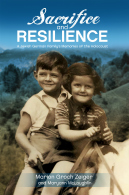
Sacrifice and Resilience: A Jewish German Family’s Memories of the Holocaust
This memoir is the story of generations of the Rubenstein family. The Rubensteins had built lives for themselves in Germany going back at least to the mid-1800s. In 1871 German Jews, including the Rubenstein family, became emancipated, achieving full equality with other Germans. Equality prevailed until 1933 when Hitler came to power. Then the Rubenstein family as well as the newly engaged Gertrude Rubenstein and Josef Groch began to be plagued by the Third Reich. First, because they were Jews, they could not have their wedding where they wanted; then they could not live where they wanted. Eventually those, in retrospect, minor difficulties were overshadowed by the violence of Kristallnacht. Events propelled Josef’s escape to England in August 1939, leaving behind Gertrude with their two young children, George and Marion.
Once Josef’s leaves for England, he and Gertrude are separated for years—separated by the war, by time, as well as by continents. Considered an enemy alien, Josef is deported by the British to Australia aboard the infamous ship HMT Dunera. There he is incarcerated in detention camps. Gertrude and the children manage to depart Europe on one of the last boats leaving Genoa, Italy, arriving in the U.S.
Even after they are reunited, Gertrude and Josef endure difficulties making a life for themselves in the U.S. Yet through hard work, sacrifice, and perseverance they prevail. The family is resilient, rising from the ashes of the Holocaust to peace and prosperity in their beloved adopted country.
Readers will marvel at the hardships that the Rubensteins and Grochs surmount both in Australia and the U.S. Sacrifice and Resilience is a stirring memoir that will hearten readers, young and old.
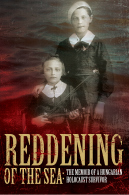
Reddening of the Sea: The Memoir of a Hungarian Holocaust Survivor
Born in Oradea Mare, Hungary, Rose Bachmann enjoyed her childhood. She sometimes rode the trolley to visit the Eagle Palace, a shopping complex. She played with her sister, Gita, her cousins, and with the neighborhood children, Jews and non-Jews alike. Rose loved the Sabbath attending synagogue and eating her mother’s delicious cholent at the Shabbat dinner. She attended a Hebrew school where her favorite subject was geography. In the summer she visited her aunt’s farm to play with the chickens, goats, and sheep.
Her tranquil life was threatened by the German occupation in March of 1944 and the subsequent ghettoization of her family. In early June, after a few months in the ghetto enduring deplorable conditions, Rose, her mother, several aunts and uncles, and six cousins were deported on cattle trains to Auschwitz-Birkenau. Forcibly separated from her mother, Rose after being processed was sent to another camp, Riga-Kaiserwald, in Latvia. There she was reunited with her Aunt Rozsi. In late summer, Rose was again transported, this time to Stutthof, a death camp, where conditions were especially harsh. The prisoners were evacuated in April 1945. Many were put on overcrowded barges and, if they could not do as ordered, were executed and thrown into the Baltic Sea. Rose will never forget how red the water was from the blood. Rose survived this brutal voyage and was liberated by the British.
In 1948, Rose immigrated to the U.S., happy to live with her mother’s sister and husband. She was no longer alone. In 1950, Rose met Isidore Steinberg, and they married in 1951. The couple have a daughter Carolyn and a son Robert, grandchildren and one great-grandchild. Rose has a family! They are her joy.
Rose Steinberg’s memoir, The Reddening of the Sea, is both heart-wrenching and inspiring. Rose is resilient. To endure three concentration camps as a teenager and yet to become a warm and loving woman is remarkable. Her memoir is a tribute to her strength and courage.
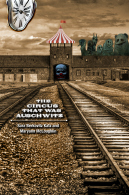
The Circus That Was Auschwitz: The Holocaust Memoir of Sara Berkovitz Katz
Born Serena Berkovitz in 1928 in Sevluš, Czechoslovakia, Sara, the youngest of seven, lived happily with her parents, Regina and Meyer, and her siblings. Her father made orthopedic shoes. In March of 1939, the Hungarians occupied Sevluš, closing the schools to Jews, so Sara’s mother home-schooled her. In 1944, after the German occupation, Sara and her family were forced into the Sevluš Ghetto. From May 1944 until May 1945, Sara was incarcerated in two concentration camps: Auschwitz-Birkenau in Poland and Zittau in Germany. She was liberated in May 1945 by the Soviets. After liberation, Sara returned to her home in Sevluš but soon realized that “we didn’t live there anymore.”
Brihah, the organization that helped Jewish Holocaust survivors escape post–World War II Europe, transported Sara to Pöcking DP camp in Germany and then to Genoa, Italy, where she met Joseph Katz, a survivor of Mauthausen Concentration Camp, whom she married. In December 1947, the group left Italy for Eretz Yisrael. Sara and Joseph settled in Haifa in 1948, immigrating to the U.S. in 1961 with their two children, Rivka and David. Sara has been happy in the U.S., enjoying the peace and beauty of her beloved adopted country.
Readers of The Circus That Was Auschwitz will be inspired by Sara’s determination and her endurance. But most of all Sara’s memoir will motivate those who have suffered great loss. She remained resilient despite the injuries and losses she experienced.
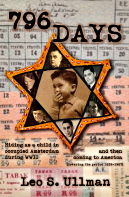
796 Days: Hiding as a child in occupied Amsterdam during WWII and then coming to America
A mesmerizing first-person story of a young Jewish boy pushed into hiding over a period of nearly 2 1/2 years during WWII with total strangers who did not know who he was, while his parents hid in an attic elsewhere, not knowing where their son was or whether he was alive. This all in the heart of Amsterdam during the brutal occupation by the Nazis. Their family, long established, leading honest, law-abiding, normal and comfortable lives were suddenly forced to (in their own words) "disappear," to "become illegal," and to "live like rats" to avoid capture and deportation to killing camps. Yet they survived, facing constant fear of death, house-to-house searches, betrayal, disease and hunger, until liberated by the Allies. They then left their home, their country and their friends to start anew, in the U.S., seeking freedom from oppression. They quickly grew roots, becoming active and involved in their chosen community, and were able to succeed with zeal and good fortune. This chronicle includes not only Leo Ullman's own personal story, but stories of other family members and their often miraculous survival. The book contains numerous unique photos, copies of documents and correspondence in support of the stories, as well as valuable historical and factual context of those terrible times.
2015. 402 pages. ISBN: 978-1-941501-12-2
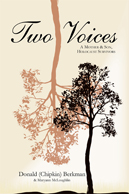
Two Voices: A Mother and Son, Holocaust Survivors
“As a young man, I did not speak of my past; however, as I have become older, I am haunted by memories.” —Don Berkman
This is the remarkable story of a Margate resident's childhood. Donald (Chipkin) Berkman, and his mother, Sara, Holocaust survivors, escaped from the ghetto to the forests of Lithuania, living in root cellars and barns but continually moving around to outwit the Nazis. They survived for over two years on potatoes, bread, and, at times, grass. Immigrating to the U.S., Don and his family had a difficult life coping with language and poverty. Yet he prevailed, marrying, and building a prosperous business and a good life for himself and his family.
Two Voices: A Mother and Son, Holocaust Survivors adds to the literature about child Holocaust survivors and their resilience, despite the traumas suffered during the hell of the Holocaust.
2010. 177 pages. ISBN 978-1-935232-15-5
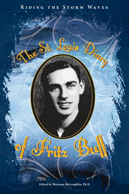
Riding the Storm Waves: The M.S. St. Louis Diary of Fritz Buff
2009. 148 pages. ISBN 978-1-935232-12-4
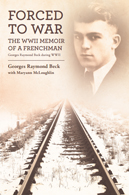
Forced to War: The WWII Memoir of a Frenchman
Following the German annexation of Alsace and Lorraine in 1940, Berlin forcibly integrated the French citizens of Alsace and Lorraine into the German army. From 1942, they were made German citizens, and 100,000 Alsatians and 30,000 Mosellans (north Lorraine) were enrolled by force into the German Wehrmacht, especially to fight on the Eastern front against Stalin's army. These men were called the malgré-nous (literally, in spite of ourselves), or in English as the "unwilling" or the "against our will."
Georges Raymond Beck, an Alsatian, was one of these malgré-nous. In the spring of 1942, he received a notice to report for the Reichsarbeitsdienst, Reich Labor Service, compulsory pre-military service. In July 1942, he was inducted into the German army and ordered to report for basic training.
By October 1942, Georges and fellow malgré-nous were on a military train, traveling through Germany, Poland, and finally into the U.S.S.R. His convoy traversed unending Russian forests and along the way was strafed by the Soviet Air Force. During the Soviet counter offensive in 1943, George and a friend decided to escape. He said, "We had no allegiance to the German Nazi doctrine whatsoever. We had no interest in helping the German war effort and had no qualms about escaping, if and when the time was right." The rest of Georges' memoir describes his dangerous journey back to France and his subsequent marriage and immigration to the United States, where he prospers.
Forced to War will appeal to WWII buffs and to students of the history of WWII as well as to a general audience. All readers will appreciate Georges' determination and resilience both as amalgré-nous and as an immigrant.
2015. 195 pages.
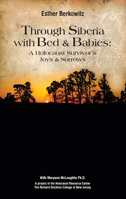
Traveling Through Siberia with Bed and Babies: A Holocaust Survivor's Joys and Sorrows
2007. 54 pages. ISBN 978-0-9766889-9-9
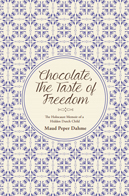
Chocolate, The Taste of Freedom: The Holocaust Memoir of a Hidden Dutch Girl
"This is story of a terrible evil and of those who at the risk of their own lives decided that evil must not triumph. It is a story of endurance and hope. It is the story of a gentle and courageous woman who emerged from the desperation of the European Holocaust to become a leader in her community in the new world."
-Governor Thomas Kean
Of the 1.6 million Jewish children who lived in Europe before WWII, only 100,000 survived the Holocaust. Most were hidden children. Dahme was one of those hidden children, hidden from the Nazis by righteous gentiles in the Netherlands. In July of 1942, six-year-old Maud and her four-year-old sister, Rita, were taken to the Spronk farm in Oldebroek and later to a fishing village, Elburg, where they were hidden with the Westerinks for the rest of the war. In 2014, in The Netherlands, Jo (Frederica von Gulik-Westerink) and her parents, Jacob and Henriette Westerink, were honored as Righteous Among the Nations by Yad Vashem, Israel's Holocaust Museum. The Spronks were honored at a ceremony in November at the Hague.
Chocolate, The Taste of Freedom chronicles not only the wartime adventures of Dahme but also her post-war experiences-reunion with parents, immigration, U.S. schools, marriage, and Holocaust education advocate.
In 2014, Maud Dahme was inducted into the New Jersey Hall of Fame as one of the state's "Unsung Heroes." Dahme's memoir, her story of courage, hope, and bravery, will inspire generations of young and old. She will no longer be an unsung hero.
2015. 181 pages.
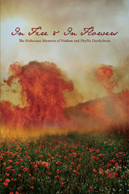
In Fire and In Flowers: The Holocaust Memoirs of Nathan and Phyllis Dunkelman
2014. 165 pages.
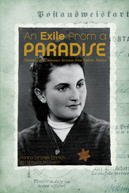
An Exile from a Paradise: Memories of a Holocaust Survivor from Bedzin
2014. 146 pages.
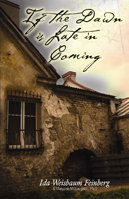
If the Dawn Is Late in Coming: Survivor of Vilna and Vaivara
2008. 81 pages. ISBN13 978-0-9793771-5-0
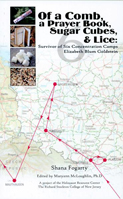
Of a Comb, a Prayer Book, Sugar Cubes, and Lice: Survivor of Six Concentration Camps—Elizabeth Blum Goldstein
Elizabeth Blum Goldstein, one of eight children, was born in Kisar, Hungary, in 1926. Her parents had a general store, orchards of fruit trees, and fields of wheat. In 1944 Elizabeth's peaceful family life was destroyed when the Nazis invaded Hungary. The family was sent for several weeks to the ghetto in Mátészalka, Hungary, and then deported to Auschwitz-Birkenau where Elizabeth was separated from everyone but her sister Iboyla. Eventually Elizabeth and Iboyla were in six concentration camps—Auschwitz-Birkenau, Poland; Płaszów, Poland; Hundsfeld, Germany; Gross-Rosen, Germany; Mauthausen, Austria; and Bergen-Belsen, Germany, where Elizabeth was liberated in 1945. Because Elizabeth was emaciated and ill, she was sent to a Swedish hospital to recover. In 1948, Mrs. Goldstein immigrated to the United States. Elizabeth has two children, Susan and Kenny, and three grandchildren, Shana, Bryana, and Adam.
Elizabeth Blum Goldstein was interviewed by her granddaughter, Shana Fogarty, over a number of weeks. With the help of Dr. Maryann McLoughlin of the Center, Shana completed the book, which was originally published in 2006; the revised edition, in 2015.
Shana Fogarty Shah, Elizabeth Goldstein's granddaughter, graduated from The Richard Stockton College of New Jersey [now Stockton University] with a major in Speech Pathology/Audiology and a minor in Holocaust and Genocide Studies. She earned a master's degree in Speech-Language Pathology from Towson University in Maryland. Between academics, working, and spending time with friends and family, Shana completed this interview of her grandmother and the subsequent manuscript. She currently works as a speech-language pathologist and enjoys spending time with her husband and children. Shana wrote this book so that readers of Elizabeth Blum Goldstein's Holocaust experiences would be inspired by her grandmother's courage and resilience and in addition would become more aware of the dangers of genocide.
2005. Revised Edition, 2015. 85 pages. ISBN13 978-0-9766889-4-5
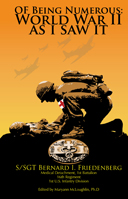
Of Being Numerous: World War II as I Saw It
2012. 249 pages. ISBN 978-1935232-5-75
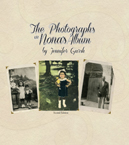
The Photographs in Nona's Album
Second Edition, 2014. 33 pages.
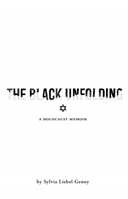
The Black Unfolding: A Holocaust Memoir of Rawa-Ruska
The [family] they'd thought was safe,
seized, shipped east,
on a rattling train,
those trains,
that Crescendo,
the Black Unfolding.
-Rochelle Natt
The youngest of seven children, Sylvia (Sara Gross) grew up in Rawa-Ruska, in southeast Poland. A good student she looked forward to further studies. In 1941, however, the Germans occupied Rawa-Ruska and measures against Jews were promulgated. There would be no further education for Sylvia, then 15 years old.
In summer of 1942, after escaping from a roundup of Jews who were being deported to Belzec Death Camp, Sylvia and her sisters, as non-Jews, volunteered for work in Germany. Little did the sisters know then what would be the fate of the rest of the family.
Sylvia's memoir describes her work at an AEG electric factory in Berlin and, later, on a farm in the village of Bentwisch am Wittenberge. All the while she was terrified of being betrayed as Jewish and deported to a concentration camp.
The Black Unfolding: A Holocaust Memoir also looks beyond WWII and the Holocaust, describing Sylvia's life after liberation in 1945: her marriage to David Liebel, their immigration to the United States, and the family's eventual move to Vineland when the forsythia was in bloom; the grass, a luscious green; and lilacs scented the air. Unfortunately, even in pastoral Vineland tragedy struck the family.
This memoir will give readers a glimpse at yet another aspect of survival during the Holocaust and introduce them to a strong and resilient woman who refused to succumb to the darkness.
2015. 86 pages.
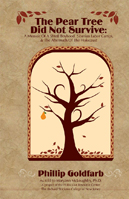
The Pear Tree Did Not Survive: A Memoir of a Shtetl Boyhood, Siberian Labor Camps, and the Aftermath of the Holocaust
2008. 120 pages.
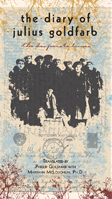
The Desperate Times! Julius Goldfarb's Diary, 1939-1944
2008. 120 pages.
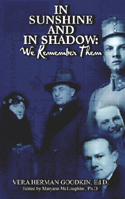
In Sunshine and In Shadow: We Remember Them
2005. 174 pages. ISBN13 978-0-9766889-9-8
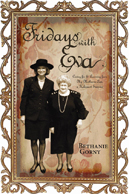
Fridays with Eva: Caring and Learning from My Mother-in-Law, a Holocaust Survivor
2010. 161 pages. ISBN 978-1-935232-11-7
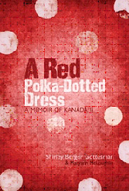
A Red Polka-Dotted Dress: A Memoir of Kanada II
2011. 89 pages.
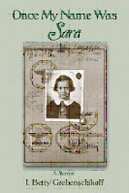
Once My Name Was Sara
First Edition, 1992. Second Edition, 2004. 180 pages. ISBN 0-9639344-0-6
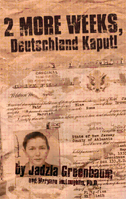
Two More Weeks! Deutschland Kaput!
2008. 106 pages. ISBN 978-0-9793771-8-1
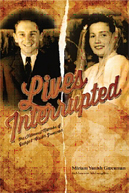
Lives Interrupted: The Memoirs of George and Miriam Greenman
2012. 128 pages. ISBN 9-78-1935232-5-75
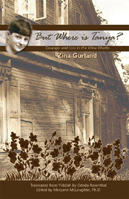
But Where Is Tanya? Courage and Loss in the Vilna Ghetto
Second Edition, 2007. 185 pages.
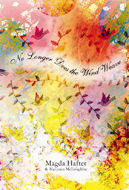
No Longer Does the Wind Weave: Magda's Memoir
2011. 87 pages. ISBN 978-1-935232-35-3
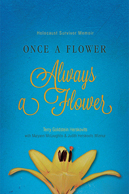
Once a Flower, Always a Flower: Terry Herskovits—Hungarian Survivor of the Nazi and the Communist Regimes and the Hungarian Spring
2013. 124 pages.
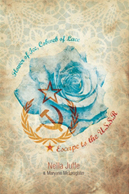
Flower of Ice, Cobweb of Lace: Escape to the USSR
Second Edition, 2012. 205 pages. ISBN 9-781-935232-4-83
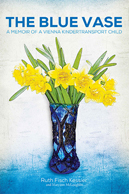
The Blue Vase: A Memoir of a Vienna Kindertransport Child
In the beginning was the end of innocenceWhen goose steps clickedAnd evil licked the world with violence.—David Walders, “Born in Safety”
2014. 90 pages.
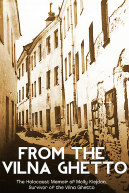
From the Vilna Ghetto to the U.S. and Liberty
From the age of three Molly Avidon lived with her dear aunt and uncle in Vilna, a flourishing city that Napoleon had called the “Jerusalem of the North.” Molly’s early life was good, but when she was fifteen, in 1940, she said she grew up so fast that she felt as if she was eighty. Initially occupied by the Soviet Union, in June 1941, Vilna was bombed by the Germans who ousted the Soviets and initiated a reign of terror against Vilna Jews.
The Nazis assigned Molly to work in vegetable gardens and on the railroads. These labors she did in the frigid cold and suffocatingly hot weather during which time she received very little food. Eventually she was transferred to an Army Motor Vehicle Repair Park where she survived with her husband, Pinchus Kiejdan, whom she had met while working there. Molly and Pincus were two of the very few survivors of the Vilna Ghetto.
Liberated by the Soviets in 1944, Molly’s trials were not over. In 1945, she gave birth to her son Michael in a small cold room without a doctor, electricity, or heat. After many hardships in post-war Europe, the three immigrated to the U.S. in 1949. Their pursuit of freedom brought them first to New York and then to Mays Landing, New Jersey where they had five more beautiful children.
Eventually Pinchus and Molly moved to Margate, New Jersey, where their children continued their education. Pinchus’s construction business prospered. He and his wife, Molly, contributed much to their community. Readers will be inspired by Molly’s resilience and her celebration of her husband’s philanthropy.
2019. 168 pages.
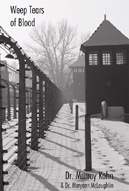
Weep Tears of Blood: A Teenager Survives Auschwitz
2010. 108 pages.
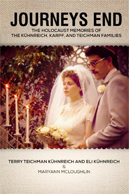
Journeys End: The Holocaust Memories of the Kühnreich, Karpf, and Teichman Families
2016. 178 pages.
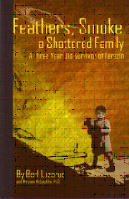
Feathers, Smoke, A Shattered Family
2009. 102 pages. ISBN 978-1-935232-05-6
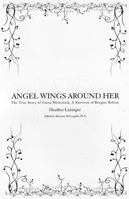
Angel Wings Around Her: A True Story of Gusia Weinstock, A Survivor of Bergen Belsen
2004. 106 pages.
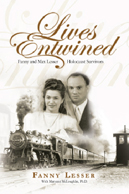
Lives Entwined: Fanny and Max Lesser, Holocaust Survivors
2007. 150 pages. ISBN13 978-0-9793771-2-9
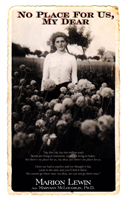
No Place for Us, My Dear
No Place for Us, My Dear is the story of two young Holocaust survivors from the same town-Wyszogród in Poland. Marion Lewin, born Malka Pasternak, was eleven years old when the Germans occupied Poland. From 1939 until 1945, Marion hid on farms and even volunteered to go with the Polish youth as a laborer into the heart of Germany.
Drafted in 1939, Joseph was captured by the Germans. Eventually he was forced into a number of ghettos, including the Warsaw Ghetto, from which he escaped. Joe was recaptured in 1944 and deported to Auschwitz-Birkenau Concentration Camp, leaving there on a death march. Jumping from a moving train, Joe escaped the Nazis yet again!
Marion Lewin's memoir, No Place for Us, My Dear, is an inspirational story of survival and resilience. Marion and Joseph had the courage and brains to outwit the Nazis, surviving to create a beautiful family and a life in the United States. This is a memoir for all ages, but especially for teenagers.
Second Edition, 2015. 311 pages.
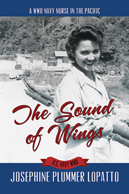
The Sound of Wings: A WWII Navy Nurse in the Pacific
2013. 162 pages.
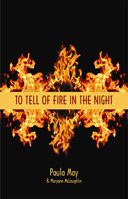
To Tell of Fire in the Night
2010. 109 pages. ISBN 978-1-935232-27-8

Leaves Swept by a Cruel Wind: The Holocaust Journals of Ilona Elefánt Schwarcz—1945-1949
2013. 290 pages.
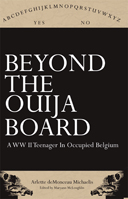
Beyond the Ouija Board: A World War II Teenager in Occupied Belgium
2005. 150 pages.
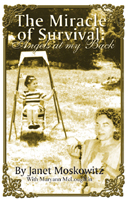
The Miracle of Survival: Angels at my Back
2007. 112 pages. ISBN13 978-0-9793771-3-6
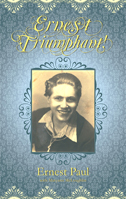
Ernest Triumphant!
2010. 406 pages.
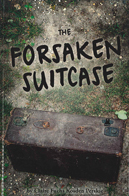
The Forsaken Suitcase: The Holocaust Memories of Claire Fuchs Kosden Perskie and Family
From the Golden City to Atlantic City: Claire's life story began with her parents' marriage in the "Golden City," Prague, in Czechoslovakia. Traveling from different countries with their own suitcases, her parents, Ester and Eugen, had met in Prague and fallen in love.
In July 1939, before the war began, at only five years old, Claire Perskie had to flee Prague. Her mother had secured fake passports that she, Claire, and her brother Harry used to join her father who had escaped earlier to England. While in London, Claire was fostered for a time by a wealthy English family. Her parents, although they had fled from tyranny and almost certain death, were viewed as aliens and were forced to register if they went more than five miles from their residence. Thus began Eugen's mission-to have his cousin Katie in Florida send him and his family U.S. visas. Many letters went back and forth across the Atlantic. Many were the heartbreaking delays in securing these visas during WWII, including when the family was trapped in London during the Battle of Britain. Eugen wrote to Katie of his fears for his mother and sister still in Prague where the Nazis were burning synagogues and transporting Jews to death camps; he felt helpless not being able to save them.
After the war, the family immigrated to the U.S., staying briefly with Katie, but mostly looking for work in various states, Florida, North Carolina, Maryland, and finally in Atlantic City where they settled, running bed-and-breakfast inns. As for most immigrants, life was not easy. But through hard work and perseverance the family prospered.
For many years Claire researched her family's history wanting to write a memoir. Then in 2009, an old leather suitcase was found curbside in Milton, Florida. Rescued by a preservationist, who found letters from England inside the suitcase, the letters were sent to Claire who then told the story in The Forsaken Suitcase. Claire's memoir is a tragic story of loss and desperation but also of hope and resilience. Readers will be inspired by the family's triumph over the many overwhelming obstacles to immigration that were faced in Czechoslovakia and England as well as in the U.S.
2015. 241 pages.
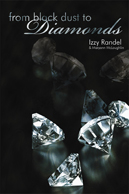
From Black Dust to Diamonds: Icek Randel's Memoir of the Holocaust
“The residents of Dabrowa Górnicza would say that there were no clear or blue skies. Everything was covered in soot, the walls, the houses, and the footpaths.”
Born in Dabrowa Górnicza during the interwar period, Icek (Izzy) Randel and his family lived a comfortable middle class life. Dabrowa Górnicza, an important coal mining region is close to Bedzin, where many of Izzy's relatives lived. The stability and security of family life was shattered when the Germans attacked and then annexed the area.
Vineland resident, Izzy Randel's memoir, From Black Dust to Diamonds, carries us through labor camps and displaced persons' camps to Germany where he meets Helen, the love of his life.
Izzy Randel's Holocaust story is a tragic one, yet he endured. His memoir is emotionally rewarding—romance and resilience—and an inspiration to all who have prevailed over great loss and obstacles.
2011. 83 pages. ISBN 978-1-935232-4-14
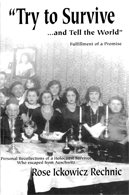
Try to Survive and Tell the World
Rose Rechnic, born in Będzin, Poland, was the sole survivor of her family, all of whom were murdered in the Holocaust. Rose’s memoir fulfills her promise to her mother, whose final words before she went to the gas chambers were “Try to survive and tell the world.”
In a series of vignettes spanning more than sixty years, Rose Rechnic conveys the unspeakable, while engaging her readers with vivid images, both haunting and uplifting. She includes the story of her aunt, Regina Safirsztajn, who was one of the heroes of the Auschwitz-Birkenau Sonderkommandouprising.
This memoir continues in the tradition of Rose’s lifelong commitment to Holocaust education. It is her hope that the world will never forget the millions of Jews whose lives were sacrificed to antisemitism.
Try to Survive and Tell the World is a memoir that will inspire young and old.
2002. Revised Edition Forthcoming Fall 2017. 159 pages. ISBN 0-615-12056-3
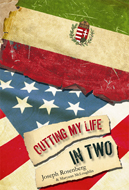
Cutting My Life in Two: A Holocaust Memoir
Joseph Rosenberg, of Margate, grew up in Nyíregyháza, Hungary, a large city near Budapest. Joe had a comfortable childhood, loved and protected until April of 1944. By then the Nazis had forced the family to move into a ghetto and in May of 1945 deported them to Auschwitz-Birkenau Concentration Camp. From Auschwitz, Joe was sent first to Jaworzno slave labor camp and after a death march to a starvation camp, Gunskirchen. Liberated by the U.S. Army, Joe was barely alive. Joe, only seventeen, and his brother Beru were accepted on a special transport to the U.S.
After settling near an uncle and aunt's in Bridgeport, Connecticut, Joe served in the U.S. Army. In 1954, Joe met his future wife, Nita, whose large and loving family embraced Joe as a brother. Joe loves the U.S, its freedom and its opportunities. He calls it, “America, the Beautiful.” This is a memoir of theShoah but also a memoir about immigration and the long term effects of the Holocaust.
2011. 70 pages. ISBN 978-1-935232-37-7
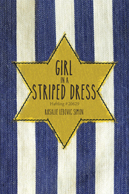
Girl in a Striped Dress: A Survivor of Auschwitz-Birkenau, Geislingen, and Allach
Just as despair can come to one only from other human beings,
Hope, too, can be given to one only by other human beings.
—Elie Wiesel
Rosalie Lebovic Simon, born in Czechoslovakia, the baby of the family, was only a child when World War II began. A gifted student she was expelled from school in 1943. By April of 1944 she and her whole family were deported first to a ghetto located in Mátészalka, Hungary, and then eight weeks later to Auschwitz Birkenau. There she and her four sisters were separated from her parents and her brother, William.
Rosalie's memoir tells of the number of escapes from death that she had. Twice selected for the gas chambers, she is saved by the kindness of others. Eventually she is transported with her sisters to labor camps where they work making munitions. Liberated in 1945 by the American army, Rosalie and her sisters, after finding their father, return to Teresva, their hometown, to a ghost town with the Jewish homes emptied and no children playing. Not yet fourteen years old Rosalie was faced with some bitter truths. Her life and the lives of her family had been torn to pieces as if by wolves. But, she writes, “at least we had our lives.”
When she was eighteen, Rosalie immigrated to the United States, living for a time in Baltimore, Maryland, where she met her husband, Sidney. The couple later moved to South Jersey and has prospered. Sidney and Rosalie have three children, seven grandchildren, and three great-grandchildren—these are not only her revenge on Hitler but also her hope for the future.
Rosalie ends her memoir with a prayer: “I pray that the world's children grow up where there is no more bloodshed and murder. I pray that no one is ever again forced to wear a striped dress, the uniform of a concentration camp prisoner.”
2014. 164 pages.
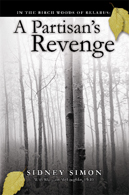
In the Birch Woods of Belarus: A Partisan's Revenge
One of five children, Margate resident, Sidney Simon was born in Belitze, Poland, now Belarus. Sidney had a happy childhood, fishing and swimming in the River Neman. When the Nazis invaded Belitze, Poland, they terrorized the Jews and eventually put Sidney's family in a ghetto, from where they escaped to the forests.
Sidney Simon's memoir recounts his life as a partisan and his experiences in the Soviet army. After the war, Sidney and his family immigrated to the United States where Sidney met Rosalie, whom he married in 1952.
In the Birch Woods of Belarus: A Partisan's Revenge will give readers a new understanding of the partisans and their contributions. They will understand better that Jews did resist when they could. This memoir will captivate students and adults alike, showing the courage and love of a young man for his family and his religion. Sidney Simon is a role model not only for his bravery but also for his resilience, from despair comes hope—the blessings of love and family.
2010. 157 pages. ISBN 978-1-935232-00-1
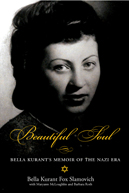
Beautiful Soul: Bella Kurant's Memoir of the Nazi Era
When Bella Kurant was fifteen, she lived through the German bombing of Warsaw, Poland, at the beginning of WWII. After witnessing those horrors, Bella returned home to her parents in Skrzynno, seeking shelter and safety. Bella found neither shelter nor safety for six long years. In October 1942, the SS and the Einsatzgruppen liquidated the Jews of Skrzynno. Escaping her hometown, Bella began her torturous journey to freedom. She was incarcerated in many ghettos and labor camps from 1942 until her liberation in 1945: the Radom Ghetto, Szydlowiec Ghetto, Wolanów Labor Camp, Blizin Labor Camp, Auschwitz-Birkenau for a short time, Hindenburg Labor Camp, Dora-Nordhausen Camp, and finally to the hellish Bergen-Belsen Camp with its mountains of dead bodies. In those labor camps, Bella sewed uniforms, painted signs, and welded for the Nazis. Along the way, she endured death journeys on foot and by train. Yet despite her own pain and guilt, Bella saved the lives of two especially fragile women.
When Bergen-Belsen was liberated on April 15, 1945, Bella remained there, waiting for news of surviving family members. Despite her depression, she assisted other survivors in locating their families. Best of all she fell in love at first sight with Paul Fox, a Holocaust survivor from Wloclawek, Poland. In 1946, the couple married and immigrated to the United States, where Bella finally found shelter and safety. Their child, Elan, was born in 1948. Although coping with many difficulties, the family eventually prospered in San Francisco, opening a kosher deli and a catering business.
After Paul's death, Bella married Henry Slamovich, a Schindler Jew. Bella and Henry live in San Francisco surrounded by their loving children, grandchildren, and great grandchildren. The life story of this gitte neshuma, beautiful soul, will be an inspiration.
2015. 475 pages. ISBN 978-1-941501-16-0
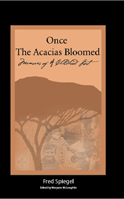
Once the Acacias Bloomed: Memories of a Childhood Lost
Fred Spiegel was born in a small German town in 1932. Like Anne Frank, Fred and his sister, Edith, relocated to Netherlands, and were subjected to persecution after the German army invaded and occupied the Netherlands in May 1940. The Spiegel children, separated from their mother, were sent to transit camp Westerbork in the Netherlands. Then they were transported east, ending up in the Bergen-Belsen concentration camp. The two survived the war and reunited with their mother in England in the fall of 1945. Fred later lived in Israel and Chile before immigrating to the U.S. with his wife, Yael, an Israeli Sabra.
Fred's memoir, Once the Acacias Bloomed: Memories of a Childhood Lost, deepens our understanding of the world during the Shoah, as seen through the eyes of a child.
First Edition, 2003. Second Edition, 2011. 140 pages. ISBN 0-9674074-6-X
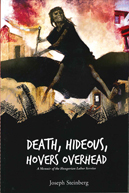
Death, Hideous, Hovers Overhead: A Memoir of the Hungarian Labor Service
Joseph Steinberg was born in Svalyava, Czechoslovakia, in 1922, a time of stability, tolerance, and democracy. Under the presidency of Tomáš Masaryk, the 1920 Czech constitution had granted minority rights to Jews. In Joseph's hometown Jews and non-Jews lived in harmony. But by 1938, Hitler' Germany and neighboring states such as Hungary were negotiating for parts of Czechoslovakia. Occupied by Hungary in 1938, the Jews of Svalyava were subjected to harsh antisemitic laws. By November 1942, forced labor became obligatory for all Jewish males between the ages of 21 and 48. These labor battalions, conscripted by the Hungarian regime, were stationed all over Hungary and beyond, including on the Eastern Front. Jews in these units were treated deplorably and subjected to atrocities, such as marching into mine fields to clear areas so that the regular troops could advance. Thousands died from abuse, cold, malnourishment, and disease. Some labor units were entirely wiped out during the fighting, especially at Stalingrad. Ironically, after Germany occupied Hungary in March 1944, the labor service offered the possibility for thousands of Jews who otherwise would have been deported to death camps.
In 1942, Joseph Steinberg was drafted into the labor force and eventually served at Komárom and Esztergom labor camps, working at various grueling jobs, which were acerbated by cruel battalion leaders. Joseph's brothers Mark and David were also drafted into labor battalions, serving on the Eastern Front. Joseph survived the siege of Budapest in December 1944, only to be sent on a forced march to Koszeg labor camp on the Austrian border.
After the war, Joseph immigrated to the United States where he met and married Marion Beleiff of Philadelphia. They owned beach stores in Ocean City, Maryland, and Stone Harbor, New Jersey, before retiring to Ventnor. They have three children and six grandchildren-a very close and loving family.
Joseph Steinberg's memoir is one of the few about a survivor of the Hungarian Labor Service. As his memoir's title, Death, Hideous, Hovers Overhead, attests, Joseph's life in the labor force was perilous. His courage and resiliency will inspire readers.
2014. 107 pages.
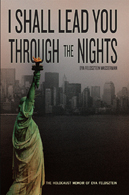
I Shall Lead You Through the Nights: The Holocaust Memoir of Eva Feldsztein Wasserman
"Carry the baby in your left arm. Your right arm must
be free to cross yourself when you pass a holy shrine."
One of the few survivors of the Warsaw ghetto, Eva Feldsztein escaped the ghetto with her baby, running from the Nazis for two long years.
Before WWII began, Eva Feldsztein nee Zuchawetzka studied nursing in Warsaw, graduating from the St. Sophie School of Nursing and Midwifery. Eva did private duty nursing until she met and married Victor Feldsztein. During the siege of Warsaw, Eva visited as many sick as she could, running through courtyards and climbing over roofs, often caught in the crossfire. Incarcerated in the Warsaw ghetto late in 1940, Eva witnessed terrible scenes of starving children and families. In the ghetto, in June 1942, Eva gave birth to Stephen, a premature baby weighing just one kilogram. Miraculously, the baby survived. Having avoided various Nazi Aktions, in March 1943, Eva and Baby Stephen escaped the ghetto. She assumed a new identity as a Polish Christian. Eva with Stephen moved around Poland, hiding in different locations. She had many close calls and was beaten and jailed; however, through her wisdom, courage, and luck, Eva escaped deportation. She was helped throughout the two years by the Matacz family members, who in fall 2012 were honored as Righteous Among the Nations. Eva and Stephen survived the war only to learn that Victor and Stasio, her stepson, had been murdered in Auschwitz-Birkenau.
After the war, Eva met David Wasserman, also a survivor. They married and immigrated to the U.S.in 1947, settling in Brooklyn, New York. Eva and David had two more children, Mina and Allen, and the family built a good life in America—in a free society.
Eva died in 1992, shortly after finishing writing her memoir. Her manuscript has been published thanks to the love and care of her son, Stephen, and daughter, Mina. Readers will be inspired by the bravery and audacity of Eva who was determined that her “miracle” baby and she would survive and prosper.
2013. 187 pages.
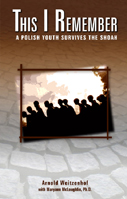
This I Remember: A Polish Youth Survives the Shoah
Born in Gdov, Poland, former Galloway resident, Arnold Weitzenhof, remembers his family bakery and grocery store, especially the tin the tea came in—a tin box painted red with the picture of a Chinaman with braids on the front. He remembers that his parents wanted Arnold to be a dentist because he had beautiful, artist's hands. In 1939, Gdov was occupied by the Wehrmacht; however, in 1940 the SS and Gestapo made the town Judenfrei (free of Jews). Arnold, only twelve years old, and his brothers were taken to Stalowa Wola Concentration Camp, By the time the war was over, Arnold had survived four different camps—Stalowa Wola, Julag One, Plaszów, and Czestochowa.
The only survivor of his family, Arnold immigrated to the United States and retired from hairdressing to Galloway with his wife, Gloria, a retired accountant. This I Remember: A Polish Youth Survives the Shoah, a memoir of a boy will appeal to students—especially middle and high school students—but all of us can find much to admire in Arnold's story. Arnold Weitzenhof prevailed over tremendous hardships and sorrows to become a prosperous, gentle, and loving man.
2006. 74 pages. ISBN13 978-0-9766889-8-3
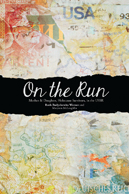
On the Run Mother and Daughter, Holocaust Survivors, in the USSR
In September 1939, when Ruth was nine years old, the Germans occupied Dlugosiodlo. A month later they exiled the town's Jews. They were ordered to leave Dlugosiodlo, within the hour, abandoning their homes and taking as much as they could carry. They were told to go where the Soviet army was—“to your brothers the Russians.” Thus began Ruth and her mother's exile in the U.S.S.R. For years on the run, they stayed one step ahead of the Wehrmacht (German army) from Belarus all the way to Tatarstan, the Ural Mountains, and finally to Ukraine, enduring along the way famine as well as hard work on Soviet collective farms. In 1946, mother and daughter were repatriated to Poland, but antisemitism there propelled them to seek safety in displaced persons (DP) camps in Germany.
Receiving U.S. visas from Ruth's father, they emigrated from Europe in January 1948. In New York City, Ruth earned her accounting degree and met Irving Zimmerman Werner whom she married. In 1949, the couple settled in Vineland, seeking to make a living, first on a chicken farm and then in retail. Despite various setbacks, Ruth and Irv prospered in the U.S., having three children, Barbara, Judy, and Kenny. No longer “on the run,” Ruth is happy to have settled in the U.S., appreciating the freedom and opportunity here. A coming of age as well as a Holocaust memoir, Ruth's life story will inspire children and adults alike.
2014. 110 pages.
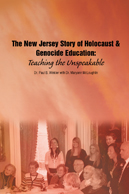
Teaching the Unspeakable: The New Jersey Story of Holocaust and Genocide Education
This book presents the 30-year history of the State of New Jersey's involvement in Holocaust and Genocide education with the establishment of a Council/Commission by Governor Tom Kean and the passage of the legislative “Mandate” in 1994 that students in all grades must learn about the Holocaust and genocide.
The book highlights many of the programs and curriculum developments over the years and the importance of the network of Holocaust/Genocide centers throughout the State. The book concludes with activities and concerns for the future to ensure that Holocaust and Genocide activities become an integral part of the education of our students.
Second Edition, 2013. 122 pages. ISBN 978-1-935232-74-2
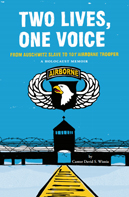
One Voice, Two Lives: From Auschwitz Slave to 101st Airborne Trooper
This powerful memoir takes the reader from a peaceful home in Sochaczew to terror in Auschwitz-Birkenau and lastly to the safety of the Screaming Eagles. David Wisnia, a child singing star, was the middle child in a family of five. His father was a prosperous furniture manufacturer; his mother a contented housewife. After the family moved to Warsaw, David's family happily celebrated his Bar Mitzvah. He remembers the marmalade, a rare delicacy, served on this special day. Six months later Europe was at war, Warsaw was occupied, and tragedy struck his family. David became a fugitive on the run from the Nazis.
Eventually rounded up by the SS, David was deported to Auschwitz-Birkenau. There, because he can sing, he was assigned a "good" job disinfecting clothing in the Sauna, a relatively warm and comfortable place. Despite this he lived through three years of fear, knowing each day could be his last. David survived Auschwitz as well as a death march with the help of fellow inmates. His encounter with the 101st Airborne after escaping from the SS was the stuff of fairy tales. "Little Davey," as he was called, at eighteen years, ended up being "adopted" by the soldiers of the 101st Airborne Division who assisted him in immigrating to the U.S.
David's story is unique: he is a Holocaust survivor and also one of a band of liberators. One Voice, Two Lives adds a new dimension to Holocaust narratives.
2015. 186 pages. ISBN 978-1-941501-20-7
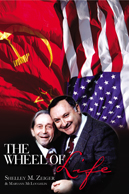
The Wheel of Life: A Memoir
An inspiring memoir about an exceptional person—Holocaust survivor, immigrant, husband, father, grandfather, entrepreneur, rescuer, and developer of joint ventures and cultural exchanges with the U.S.S.R. These words describe the main spokes on Shelley M. Zeiger's wheel of life.
Born in 1935 in eastern Poland, Mr. Zeiger was a child when his hometown Zboròw was occupied first by the Soviet Union in 1939, and then in1941 by the Germans. For over a year the Zeiger family of four and two orphan girls were hidden in cramped conditions under a root cellar by Anton Sukhinski, the "town's fool." Although harassed and threatened with arrest, Anton continued to supply them with food and water. Liberated by the Red Army in July of 1944, the family eventually fled Zboròw for the West, immigrating to the United States in late 1949. Despite language and cultural differences, Zeiger completed high school and later enlisted in the U.S. Army, becoming a citizen.
The years following were devoted to marriage and establishing a family and business. Invited to the U.S.S.R. as part of a détente delegation, Zeiger began importing Russian products and creating a network of business and government associates. This resulted in the first joint venture between the U.S. and the U.S.S.R in 1988. Because of Shelley's efforts to foster international development with the U.S.S.R, he was dubbed "The Unofficial Ambassador to The Soviet Union." Since 1989, Shelley, also known as "Mr. Trenton," for his efforts to revitalize the capital, has brought the Bolshoi and Kirov Ballet to Trenton and a number of art exhibits, among them Unseen Treasures: Imperial Russia and the New World.
In 1988, Shelley was reunited with Anton Sukhinski. Anton was honored by New Jersey governor Thomas Kane and by Yad Vashem, the Holocaust Museum in Jerusalem, as Righteous among the Nations.
Zeiger's philosophy was, "Do good, and good will come back to you." Shelley did "good" in Trentonand the world. Shelley M. Zeiger died on November 10, 2013. May his memory be a blessing. This memoir is his legacy to his family and readers of all ages.
First Edition, 2012. Second Edition, 2016. 248 pages. ISBN 978-1-941501-30-6
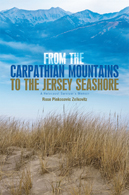
From the Carpathian Mountains to the New Jersey Seashore
Rose Pinkasovic Zelkovitz wrote her memoir, From the Carpathian Mountains to the New Jersey Seashore, especially for her children, grandchildren, and great-grandchildren. However, Rose also wanted to share her story of surviving the Holocaust with school children of all ages.
Rose was born in Czechoslovakia in the Carpathian Mountains, one of eight children. In the 1940s, Rose and her family were driven from their village and sent to Auschwitz-Birkenau. Rose eventually was imprisoned in three concentration camps—Auschwitz-Birkenau, Stutthof, and Brumberg—and forced on a death march.
Along with two sisters and two brothers, Rose survived the Holocaust. After liberation in 1945, Rose met and married her husband, Mayer, the only survivor of a family of ten. Rose and Mayer with their two-year old son, Herman, immigrated to the United State in August of 1950. They lived and worked in Baltimore, Maryland, until retiring, when they moved to Atlantic City to be closer to their son and his family.
Rose's memoir is a story of survival and resilience—of a courageous, hard-working, and loving woman.
First Edition, 2004. Second Edition, 2013. 122 pages.
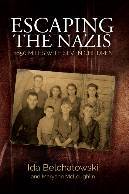
Escaping the Nazis: 1650 Miles with Seven Children
An incredible journey! Ida Brandspiegel, age five, her parents, and six other children, ranging in age from fifteen years to two weeks old, were expelled by the Nazis from their hometown, Pułrusk, Poland, in late September of 1939. They walked or took trains on their journey to the U.S.S.R. Along the way the family slept in barns with the horses, cows, and chickens and staying temporarily—only steps ahead of the Nazis—in Bialystok, Poland, and Orša, White Russia. Eventually, in October of 1941, aided by the Soviets, they reach Magnitogorsk, an industrial city in Siberia—the end of a two year journey. The family had journeyed over 1650 miles to reach safety.
Escaping the Nazis: 1650 Miles with Seven Children tells the story of this journey, their five years in the U.S.S.R., and another journey, one from Siberia to the U.S. Settling in Philadelphia, despite coping with language, job, and school ordeals, ever resilient, the family prospers.
Ida Belchatowski’s memoir—part comedy, part tragedy—will be appreciated by readers of all ages.
2017. 116 pages. ISBN 978-1-935232-99-5
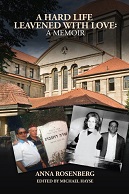
A Hard Life Leavened with Love: A Memoir
Anna Rosenberg recounts in her memoir the truly difficult circumstances in which she grew up. She was born in Germany at the close of World War II. Her pregnant mother had trekked from the Soviet Union. Soon after her birth, her mother and aunt were arrested by the Red Army in Germany and sent to labor camps in the Soviet Union. Anna was raised by her grandmother in communist East Germany, and later by an aunt in a small village in West Germany. After escaping an abusive family situation, the rest of her life was intertwined with the Rosenberg family, Jews from Warsaw who had survived World War II. In this memoir, she recounts not only her own life, but also the experiences of the Rosenbergs of Warsaw. The Rosenbergs survived the Warsaw Ghetto, service in the Red Army, and Soviet labor camps. She married Abraham (“Bolek”) Rosenberg, who helped her in a time of great need, and together they raiseda son, David, in the Jewish tradition, while Anna herself converted — a rare phenomenon in postwar Germany. After Bolek’s death, Anna found true love with his brother, Chaim, known to everyone as Hymie, in Atlantic City. Their lives, which began in the tragedy and pain of war and genocide, thus took a happy turn late in their lives.
2017. 127 pages.
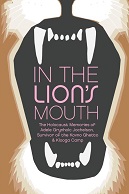
In the Lion’s Mouth: The Holocaust Memories of Adele Grynholc Jochelson, Survivor of the Kovno Ghetto and Klooga Camp
We could say that Adele and her sister went out of the lion’s den into the lion’s mouth.
Adele née Grynholc and her sister, Tola, lost their parents to illness just before the Germans occupied Vilna, Lithuania, in June 1941. Only teenagers, the sisters were invited by an uncle to come to the Kovno Ghetto where he would look after them. After various mishaps on their way to Kovno—for one, all their possessions were stolen—they arrived at the Kovno Ghetto. There for twelve hours a day, Adele was forced to labor for the SS, unloading bricks and heavy cement bags from freight trains and working for the Luftwaffe repairing and expanding the military airfield.
During the fall of 1943, Adele and Tola were deported from the ghetto via cattle cars to Klooga Labor Camp in Estonia where the conditions were brutal. Food was scarce and even water was rationed. Adele worked at various jobs in Klooga; the worst was in a factory making cement blocks that were needed as fortifications. No easy work!
Adele Jochelson’s memoir, In the Lion’s Mouth, describes the liquidation of the camp and how she and Tola survived—two of only eighty survivors. The sisters survived because of Adele’s courage and wisdom, qualities manifest even at her young age of nineteen. Readers will be inspired by her memoir, a testimony to resilience and grace.
2017. ISBN 978-1-935232-98-8
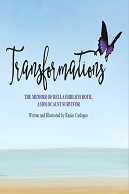
Transformations: The Memoir of Rella Ehrlich Roth, A Holocaust Survivor
Renée Carfagno earned her Bachelor of Arts in Political Science from St. Thomas University and her Master of Arts in Holocaust and Genocide Studies (MAHG) with a Genocide Prevention Certificate from Stockton University. Renée wrote and illustrated this children’s book as a fulfillment of the MAHG’s capstone requirement. On a number of occasions, she interviewed Rella Roth, a local Holocaust survivor and an acquaintance of Renée’s and her husband, about her experiences during the Holocaust.
Rella Ehrlich, along with her sister, Elizabeth, and cousin Rose, was deported from Munkács to Auschwitz-Birkenau and then to Stutthof and Bromberg-Ost. At Bromberg Concentration Camp, Rella worked in an underground munitions factory, carrying heavy rolls of munitions to trains. After liberation, she returned to Munkács where she met her husband, Joseph Roth. The two married and eventually immigrated to the U.S.
Rella’s story is delicately told and the lovely pastel illustrations work well with Rella’s narrative; thus, the memoir is appropriate for children in grades 5 and above. Adult readers too will appreciate the memoir and will be inspired by Rella’s determination to survive while retaining her humanity despite the Nazis’ efforts to turn her into an animal.
2017. 41 pages. ISBN 978-1-941501-27-6
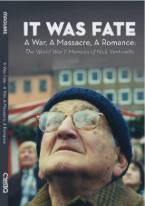
It Was Fate—A War, A Massacre, A Romance: The World War II Memoirs of Nick Venturella
"Long lives yield many treasures: pictures, keepsakes, property, or savings, . . . passed from generation to generation. But there is another precious legacy, one that is often lost: memories, the closely held images of people, places, and things that are the blueprint of life." —Greene & Fulford
Nick Venturella ensured that his memories of people and places were not lost. He entrusted a narrative of his life along with letters, photographs, documents, and newspaper articles to his granddaughter Gina, who, like a memorial candle, through his memoir, lights the way for future generations. Because of Gina’s work, Nick’s memoir will be a “precious legacy” not only for his descendants but also for the general reader.
Nick Ventrella’s memoir of WWII provides readers with a window into war, from both a personal and historical perspective. Readers will applaud the service and sacrifices of these soldiers and recoil at the atrocities they encountered during their slog through Germany. These atrocities are memorialized by Nick’s unit, the 102nd Ozark Infantry Division.
Nick’s memoir, It Was Fate—A War, A Massacre, A Romance, is more than war and massacres. Readers will witness the blossoming of love between “enemies,” between a German Fräulein and an American soldier, and will follow the two along the rocky road to the U.S. Army’s marriage permission. Along this road too readers will learn about the war from a German perspective, for example, an anti-Nazi’s treatment by the Third Reich.
Most of all, readers will be inspired by Nick Venturella. Nick is a thoughtful and caring man, compassionate and kind. He certainly belongs among “the greatest generation”!
2017. 172 pages. ISBN 978-1-935232-47-6
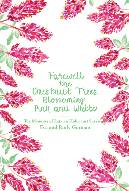
Farewell the Chestnut Trees, Blossoming Pink and Whote: The Memoirs of Latvian Holocaust Survivors Eva and Rudy Gutman
Eva Gutman was only sixteen years old when WWII began in 1939. Born in Latvia, one of the Baltic States, Eva grew up in a beautiful city, Liepāja, an ice-free port, a health resort, a source for amber. Eva especially remembers the chestnut trees, many of them over seventy-five feet tall. When she was a child, Eva would sit under these trees during a rainstorm and not feel one drop of rain. She recalls that it was especially heavenly to sit there when they blossomed. She would look through the pink and white blooms to the blue sky. Their lovely fragrance surrounded her. By 1939, Eva had met the love of her life, Rueben (Rudy) Gutman. She used to watch him in synagogue when he sang in the choir. A watchmaker like his father, Rudy was engaged to Eva.
All this loveliness was destroyed when first the Soviets and then the Germans occupied Liepāja. The Soviets sent Latvians to the Gulag; the Nazis sent them to the dunes north of Liepāja where they were murdered. Eva and her mother were moved to smaller and smaller homes and forced to work for the Nazis—sometimes cleaning toilets at a military base. In 1943, the Liepāja Ghetto was liquidated and Eva, her mother, and Rudy were transported to labor camps. These labor camps were illheated; hair would freeze to the ground where they slept. Sanitary conditions were atrocious; the stench, suffocating. The work, back-breaking. The family survived the labor camps. They even survived Bergen-Belsen where Eva witnessed cannibalism before it was liberated by the British in March 1945.
Eva’s and Rudy’s experiences during the Holocaust are important to be told.
Comparatively few Latvian Jews survived. The USHMM states that “the horrendous losses sustained during the Nazi Holocaust utterly devastated Latvian Jewry.” Their memoirs should be read.
2015. 98 pages.
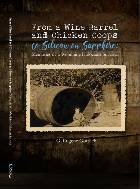
From a Wine Barrel and Chicken Coops to Silicon on Sapphire: Memories of Woodbine Holocaust Survivor
Child Holocaust survivor, immigrant, farm boy, St. Louis Cardinals fan, Ph.D., scientist, international consultant—G. Eugene Gottlieb was only five years old when he witnessed the horrors of Kristallnacht in a small German town, Venningen. He saw his father arrested and experienced the family’s exile from their home where his ancestors had lived for generations, since the 1700s. He and his parents were then forced to leave Germany, immigrating to the U.S. in February 1939, and eventually settling in Woodbine, New Jersey, a community that had welcomed immigrants since the late 1800s. After WWII the Gottliebs had to cope with revelations about the loss of their many family members in death camps.
Despite the trauma he and his family had endured in Germany and after, they lived in the present, putting their past behind them and prospering in their new homeland. Readers will not only enjoy Dr. Gottlieb’s memoir, especially his boyhood adventures on the chicken farms, but will be inspired by his journey from Germany to Woodbine and to Princeton.
2017. 310 pages. ISBN 978-1-935232-50-6
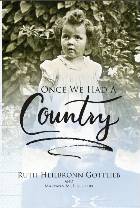
Once We Had A Country: Memoir of a German Holocaust Survivor
Ruth Heilbronn was born in Lahnstein, a town on the Rhine River. Her father, Hugo, a cattle dealer, lost his license because of Germany’s antisemitic laws. Realizing that he could not support his family, Hugo immigrated to the U.S. in October 1938, just weeks before the November 9-10 Pogrom of 1938, or Kristallnacht. During the first night of Kristallnacht, the Nazis broke into Ruth’s home terrorizing her and her mother, Else. The storm troopers, who wanted to arrest Hugo, ransacked and searched their apartment thinking that Hugo was hiding. His crime—he was a Jew. Fortunately, Hugo had already arrived safely in America. From America, Hugo sent visas for Ruth and Else who arrived in New York Harbor on April 5, 1939, one day before Ruth’s fourth birthday.
“The little refugee girl,” a good, albeit talkative, student, completed her education, graduating from Olney High School and Temple University in Philadelphia. Ruth, who had always loved children, became an elementary school teacher in Central Jersey and even in retirement is involved in an intergenerational sociology class.
Ruth’s story of coming to the U.S.—not knowing the language, living in a foster home for a time, realizing that her relatives had been murdered in the Holocaust and yet coping and ultimately thriving—is motivational for readers of all ages but especially for children displaced by catastrophe and adjusting to new lives in the U.S., for them a foreign country.
2017. 176 pages. ISBN 978-1-935232-49-40


